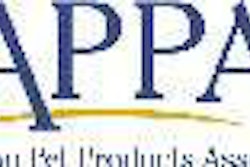Many in the petfood industry are aware of the National Animal Supplement Council (NASC) from its participation at the Association of American Feed Control Officials (AAFCO) meetings over the past number of years. However, some readers may not be wholly familiar with the organization's goals and strategies as they pertain to pet products. In May, I accepted a gracious invitation to attend NASC's annual meeting in San Diego, California, USA, where I was impressed with its efforts in addressing some serious regulatory hurdles.
Regulatory background
NASC was formed in 2002 in response to discussions within AAFCO regarding enforcement actions against products containing, for lack of a better term, unapproved ingredients. Under the US Federal Food, Drug and Cosmetic Act (FFDCA) and equivalent state laws, ingredients used in animal feeds (including supplements) must be:
- Generally recognized as safe;
- Approved food additives; or
- Otherwise sanctioned for their intended purposes (e.g., via the AAFCO feed ingredient definition process).
The Dietary Supplement Health and Education Act (DSHEA) opened the door for use of previously unacceptable food ingredients in dietary supplements for human consumption. The US Food and Drug Administration (FDA) subsequently gave notice that DSHEA did not apply to animal products and, hence, they remained subject to the aforementioned ingredient provisions in FFDCA. Because of these differences in applicability of the law, an ingredient that may be perfectly acceptable for use in human dietary supplements could render similar products intended for use in animals as adulterated and subject to enforcement action.
Since its inception, the goal of NASC has been to provide a means by which animal products containing ingredients not meeting FFDCA ingredient provisions could adequately satisfy regulatory concerns and remain on the market. To help achieve this goal, it has limited its efforts to dosage form products-pills, liquids, powders, etc.-intended for animals that are not in the human food chain. Various approaches have been attempted over the years, but the current strategy primarily relies on regulatory enforcement discretion.
NASC in brief
Some members of NASC manufacture conventional nutritional supplements, such as those containing AAFCO-recognized vitamins, minerals or fatty acids. NASC advises its members that these products must meet all provisions of FDA and AAFCO as required for foods.
For other products, such as those containing herbs and botanicals, antioxidants and other substances that do not have a recognized role in traditional nutrition, the guidance is quite different. Briefly, they are to be labeled similar to drugs, not foods. As such, they are no longer supplements, and their labeling cannot connote nutritive value or other food properties. There is no guaranteed analysis on the label, but rather a declaration of quantitative content of active ingredients.
Claims may extend beyond those historically acceptable for a food item but remain in the realm of effect on structure/function rather than disease treatment or prevention (i.e., similar to that allowed on human dietary supplement labels under DSHEA). Depending on the ingredients, certain cautionary label statements may be required.
Beyond labeling, NASC has established other procedures that members must follow to help address regulatory concerns, including an adverse event reporting system.
Formidable task
NASC is attempting a formidable task in defining a category of pet products that does not fit neatly into the current regulatory rubric. Under FFDCA, FDA can only view products of this ilk as either foods or drugs. DSHEA considers human dietary supplements as a subcategory of foods but with special provisions in the law not afforded foods in conventional form.
In this case, though, what NASC describes as "dosage form animal health products" are more amenable to regulation as drugs under current law. While I doubt any NASC member prefers this categorization, it appears to be the only currently viable option for most manufacturers of these types of products.
While these products are not formally approved as drugs as stipulated in FFDCA, regulators appear willing to exercise enforcement discretion in that regard. NASC's annual meeting was attended by representatives from both FDA and state feed control official offices, who in my estimation appear to be at least tacitly in support of current NASC efforts. As drugs, though, these products would fall out of the purview of AAFCO and states that do not enforce animal remedy laws and regulations.
Causes for concern
One concern relayed to me is that while products in dosage form can comply with NASC guidance, the majority of petfoods cannot. This could create an unequal enforcement situation, wherein the same ingredient would be acceptable in the former but not the latter. On the other hand, DSHEA causes the exact same discrepancy in regulation of human foods vs. supplements.
Another concern of the petfood industry is that once established as drugs, it is unlikely many of the ingredients now used in both types of products will ever be considered as acceptable food ingredients again. However, NASC represents the dosage form manufacturers, not the petfood industry at large, so these matters are not within its duty to address.
Personally, my biggest concern is from a scientific, not regulatory perspective, in that this approach is based on the presumption rather than demonstrative proof of safety prior to marketing. In my opinion, DSHEA is similarly deficient in this regard.
I understand and appreciate the sizable burden of a premarket approval process on manufacturers. However, notwithstanding NASC's advisory risk assessment of potential ingredients, adequate safety data on many ingredients are largely lacking, and reliance on an adverse event reporting system as a primary means of detecting problems is simply too late. Admittedly, though, the predictions of dire safety consequences from passage of DSHEA 15 years ago arguably have not been realized.

















